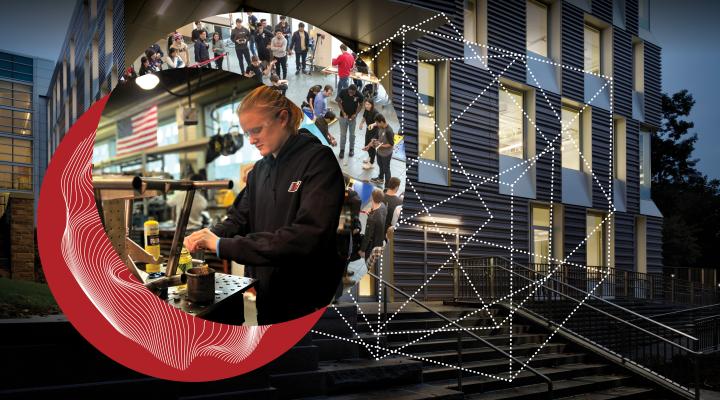In 2013, associate professor Derek Warner began working with the U.S. Navy, supporting their effort to 3-D print flight-critical components for the V-22 Osprey aircraft. After some success, Warner began thinking about other applications for custom 3-D printing.
“This technology really seems to be useful for aerospace and biomedical,” Warner remembers thinking at the time. “But what about low-tech?”
So Warner sent an email to Cornell’s College of Agriculture and Life Sciences and received a response from Erika Styger, director of programs at the SRI International Network and Resources Center. SRI—System of Rice Intensification—is a methodology made popular by Cornell in which rice farmers can increase their yields by 50 percent or more by spacing seeds more optimally and weeding manually rather than relying on flooding techniques. The method has proven effective in countries all over the world, but it requires farmers to change their agricultural practices and use new tools.
Styger and Warner wanted to investigate the mechanical challenges that existed for farmers—who often live in remote villages—in implementing the sustainable rice practice. So they applied to the Atkinson Center’s Academic Venture Fund, and in 2016 received a grant to begin meeting with some of SRI’s field partners.
The team spoke with a blacksmith in Mali, a farmer in Libya, and businessmen in Malaysia and Pakistan. That’s when they realized that many farmers around the world were using similar tools despite their varying local conditions.

“In the Himalayas, when you go from village to village, the soil can be very different. The seeds are different. You can imagine different varieties of rice seeds and what would be needed to drop one seed at a time. The ergonomics are different, whether woman are doing the work or men are doing it,” says Warner. “That’s why I thought 3-D printing might make an impact here. It offers us the ability to do cheap customization, so you can say, ‘OK, in your village this is what would work well.’”
Warner sent his doctoral student, Wenjia Gu, to Colombia to investigate more. SRI had organized a gathering of farmers from several South American countries, giving Gu a chance to see their challenges and showcase the 3-D-printing technology.
“We went to the field and looked at their equipment, and there are some special requirements for the spacing of their seeds,” said Gu. “They want to keep a constant spacing between each other so they can absorb enough nutrition and have high yields, so that’s why they need special equipment. They have a seed distributor but the problem is the spacing is not satisfying.”
Plotters, seed drills, transplanters and weeders—Gu saw a number of tools that could potentially be customized for local farming conditions and used to improve crop yield.
She then had an opportunity to showcase a 3-D printer and a plastic prototype she had printed. It was a rotor that could be used to retrofit a weeder. With rapid prototyping, according to Gu, farmers could quickly test different designs and make adjustments based on trial and error.

She offered to print special tools and molds for the farmers she met in Colombia, but since leaving, she has had limited contact with them.
“They were very excited about the 3-D printing technology, but I don’t think they are in a place to buy something unproven for research,” says Gu.
Styger and Warner have reached the end of the venture funding and are proud to have been the first to explore the concept of 3-D printing customized parts for farm tools in developing nations. While they have moved on to other research projects, a seed of their own has been planted, waiting to be cultivated by someone who can combine what they have discovered with his or her own ideas for implementation.







